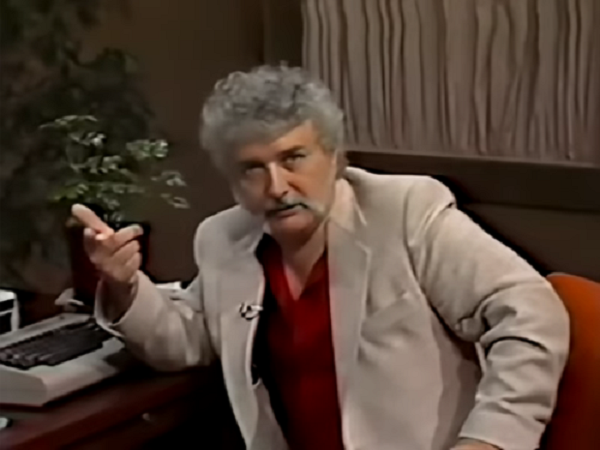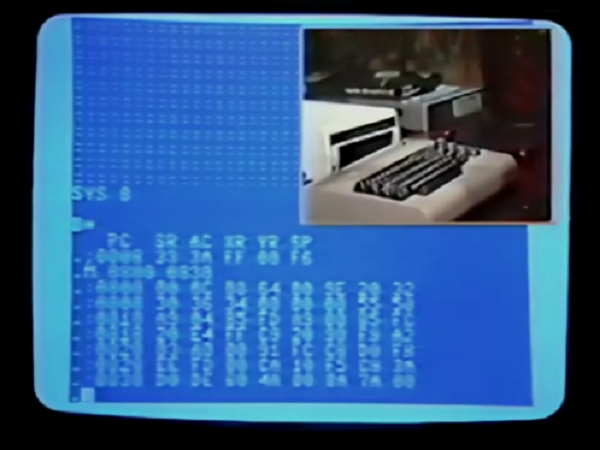Unboxing A Commodore 64 (With Jim Butterfield)
by Rani Baker
Not even 20 years ago, producing and distributing a video for your latest project wasn't something that could be accomplished in an afternoon with no specialized equipment. It almost always involved renting a studio or college A/V lab, which you had to budget for, then script and rehearse and pay attention to light and sound, then edit and mix and all sorts of other stuff. Plus, even after all that, you still had to find some way to get it out into the world.
Today, such productions are far less formal and can be recorded out of bedrooms, thanks to things like cheaper technology, more widely available broadband, and that some guys back in 2005 built a giant video-sharing platform because they didn't feel like Janet Jackson's nipple was findable enough on the internet. Which is great, overall, but unfortunately, it also means wardrobe malfunctions are easy to find now, plus a bunch of other nonsense, like enough unboxing videos that I fear we may actually start to physically choke on them one day.
Funny thing about unboxing videos, though: Their popularity predates YouTube and crappy cell phone videos. Even going back to the 1980s, people would pay actual money to see someone they respect open a box and look at the product they just bought, and nothing commanded respect back then quite like a greige lounge suit wrapped around a brightly-colored shirt and Wolverine facial hair.
Pictured: Respectable.
Now Jim Butterfield himself is a computer programming legend, to an extent that we don't have the time to get into all of it. But there are a couple of things you need to know going into this miraculous, almost two-hour-long video. The first is that my man Jim really, really wants to get into the guts of this Commodore 64 he's handling. Like, way more than the producers want to let him. The second is that Butterfield thinks you, personally, as a Commodore 64 consumer, are a bumbling, unappreciative oaf who has no idea about the absolute miracle of home computing you just purchased. He hasn't even taken everything out of the box before he shows the instruction manual to the camera and urges you not to throw it away, you incompetent goon.
I’m sure the middle finger he’s using there is completely coincidental.
Before he's ready to dive into the fun stuff, Butterfield wants to be sure you understand how everything works, so he gives a brief overview on how it’s all set up and the optional hardware available, including something called a monitor. Which is not only important to have from a graphics quality standpoint, but as he also points out, “you won't have to fight over who's going to watch the soap operas, and who's going to use the computer.” And now that I think about it, that was probably a pretty good selling point to people back in the 1980s.
Butterfield follows that up by telling you to never, ever disassemble the C64, and then he shows you exactly how to do it. After that, he seems relatively content to explain some basics, like what a cursor is and how RAM works and that there's an astounding 64 kilobytes of it in this machine. Also, that the leftover RAM after the 39KB used hasn't fallen out of the box; it's just reserved for other functions, you nitwit. He then moves on to show you how to do simple arithmetic, balance your checkbook, or whatever other plebian thing you want to waste all this computing power on. At this point, the tutorial starts feeling like it has a pretty good flow and is firmly on the rails.
Until he gets tired of talking about BASIC and pivots directly to machine language.
Now Butterfield has spent forty-five minutes or so describing some rudimentary programming and disk operations in BASIC, which should be noted is the customer-facing mode of operation of the Commodore 64. He then turns to the camera and tells you how to delete it from memory, but much like with taking it apart, that you should absolutely never do it. Switching from the operating system prompt to a terminal prompt, he explains that BASIC is a language for babies and that the real stuff happens when you are writing everything out in raw hexadecimal.
Don’t worry, I’m not going to make a joke about being basic here.
He then segues into all the very 1980s computer languages you can attempt if typing in raw hexadecimal isn't your thing. He draws a flower in Logo's turtle graphics, shows off a CP/M dual processor cartridge calling it a “big box,” and talks about features and advantages of Pascal, FORTRAN, and COBOL. He draws a funny face using ANSI graphics and explains what a pixel is. It's a good time.
The video begins winding down with Butterfield demonstrating find-and-replace on a word processor, explaining the fundamentals of music programming, and letting us know the video staff told him he wasn't allowed to dance to the music on camera (which, truly, is a damn shame). He plays a space rescue game starring Benji the dog, goes over the wide variety of software available, from education to recreation, and concludes that the Commodore 64 is a land of contrasts.
He does end the video stating that, ultimately, the computer is here for us to enjoy. But I'm skeptical that he sincerely meant that for the folks who want to use BASIC.








